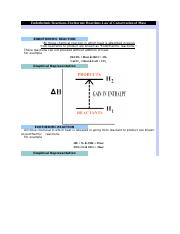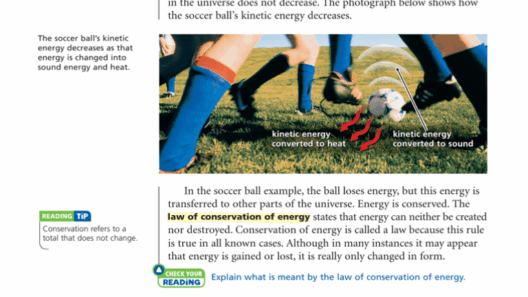Football, a globally celebrated sport, captivates millions not only for its competitive spirit but also for the multitude of activities it encompasses, from training regimens to match days. However, as the awareness surrounding climate change and energy conservation burgeons, players and fans alike have a responsibility to contemplate how they can conserve energy even in such high-intensity environments. This article delves into practical strategies that can optimize energy use during football activities, leading to a stronger, more sustainable approach to the sport.
The modern game of football is demanding, requiring players to exhibit peak physical performance, which in turn often leads to substantial energy consumption. This is not only limited to the players on the pitch but extends to training facilities, equipment, and match-day operations. By implementing mindful practices, athletes and teams can significantly reduce their energy footprint.
Understanding Energy Consumption in Football
Before delving into strategies for energy conservation, it is essential to examine the areas where energy consumption is prevalent. Training sessions require lighting, electricity for equipment, heating or cooling systems, and, notably, transportation to and from venues. Matches demand amplified energy usage for lights, scoreboards, and other technologies essential to the spectator experience. Each element contributes cumulatively to the overall energy consumption of the sport.
Transporting Players and Equipment
Transportation represents a substantial portion of energy use associated with football. Teams frequently travel extensively for matches and training camps. To mitigate this impact, clubs can prioritize carpooling or utilizing energy-efficient modes of transport. Opting for public transportation or chartering eco-friendly buses can dramatically decrease the carbon footprint. Additionally, organizing local training sessions to minimize travel distances can foster community engagement while enhancing energy conservation.
Efficient Use of Training Facilities
The training ground is another domain where energy conservation can easily be implemented. Here are several strategies:
- Optimize Lighting: Utilize natural light whenever possible by conducting training sessions during daylight hours. When artificial lighting is necessary, installing LED lights can decrease energy use significantly, as they consume less energy and have a longer lifespan.
- Climate Control: During severe weather conditions, heating or cooling systems may be critical. Improve insulation in training facilities to maintain temperature efficiently. Smart thermostats can ensure climate control systems are only operational when necessary.
- Water Usage: Football pitches require substantial watering, especially in arid climates. Implementing rainwater harvesting systems can provide a sustainable alternative to main water supply.
Equipment Choices that Conserve Energy
The equipment and technology employed on the pitch can also contribute to energy conservation efforts. By considering the following, players and teams can make a tangible difference:
- Energy-Efficient Training Devices: Invest in training equipment that operates on renewable energy or uses less energy overall. Manually powered training aids can also foster a greater awareness of energy consumption.
- Choose Eco-Friendly Gear: Many manufacturers are stepping up to produce kit and gear using sustainable materials. Players are encouraged to select uniforms made from recycled materials, supporting brands that commit to reducing environmental impact.
Promoting Sustainable Practices During Matches
On match days, extensive energy usage comes from various sources. Here are ways to enhance sustainability:
- Digital Scoreboards: Shift traditional scoreboards to digital formats that use less energy. Furthermore, encourage venues to utilize energy-efficient displays for advertisements and promotions around the stadium.
- Fan Engagement: Inspire fans to be part of the conservation effort. This can include messaging about carpooling, encouraging fans to bring reusable containers for drinks, and providing refilling stations to reduce single-use plastics.
- Waste Management Initiatives: Implement comprehensive recycling and composting systems to reduce waste generated during matches. Educating fans about these processes can foster a culture of environmental responsibility among spectators.
Long-term Strategies for Energy Conservation
In addition to immediate changes, establishing long-term strategies can perpetuate energy conservation within football. Clubs can:
- Conduct Energy Audits: Regularly assess energy usage at training facilities and stadiums to identify areas for improvement. This data-driven approach can guide sustainability initiatives effectively.
- Create Sustainability Committees: Form dedicated groups within clubs focused on promoting and implementing energy-efficient practices. These committees can spearhead initiatives, track progress, and drive community engagement.
- Partnerships with Environmental Organizations: Collaborate with local environmental groups to drive awareness and action on sustainability within the community. This partnership can create a ripple effect, fostering a culture of conservation that extends beyond the football pitch.
The Role of Education and Awareness
Education plays a pivotal role in energy conservation efforts. Incorporating environmental education into training programs for players, coaches, and staff encourages a collective mindset towards sustainability. When players understand the implications of energy consumption, they are more likely to adopt eco-friendly habits throughout their sporting careers.
The message is clear: while football is an exhilarating sport that requires energy and vigor, it is also a platform to promote sustainability. As energy conservation becomes an integral aspect of the game, the sport will not only thrive but also contribute positively to the planet. Every pass, every goal, and every match-day experience can be a testament to the beautiful game’s commitment to a more sustainable future. In this joint effort, every individual has the power to make a difference, facilitating a greener, stronger future for football and the planet alike.








